
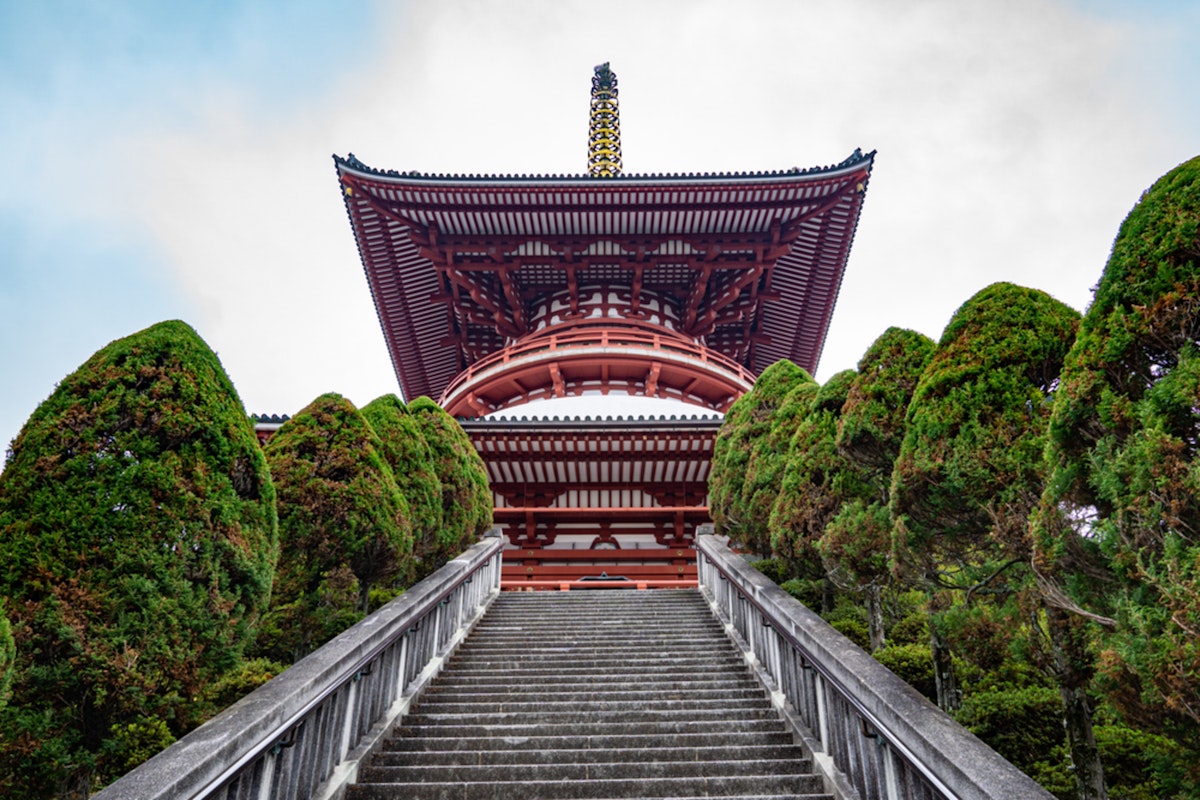
Naritasan Shinshoji Temple, a spiritual retreat that offers a tranquil experience, is nestled just an hour away from the hustle and bustle of Tokyo. Conveniently located near Narita International Airport, this Buddhist temple in Narita City has attracted millions of visitors annually.
It is the second most visited temple in Japan after the Meiji Shrine. Visiting this serene temple complex is highly recommended if you're in Tokyo or transiting through Narita Airport.
The Naritasan Shinshoji Temple is an ancient place built in 940 AD. It's a particular spot for a kind of Buddhism called Shingon. People know it for a fire ceremony called the Goma Fire Ritual.
People have come here for over a thousand years, seeking peace and healing. It's Japan's second most famous temple after the Meiji Shrine. The temple is in Narita City, close to Narita International Airport.
Both local people and visitors from other countries come here to find spiritual peace.
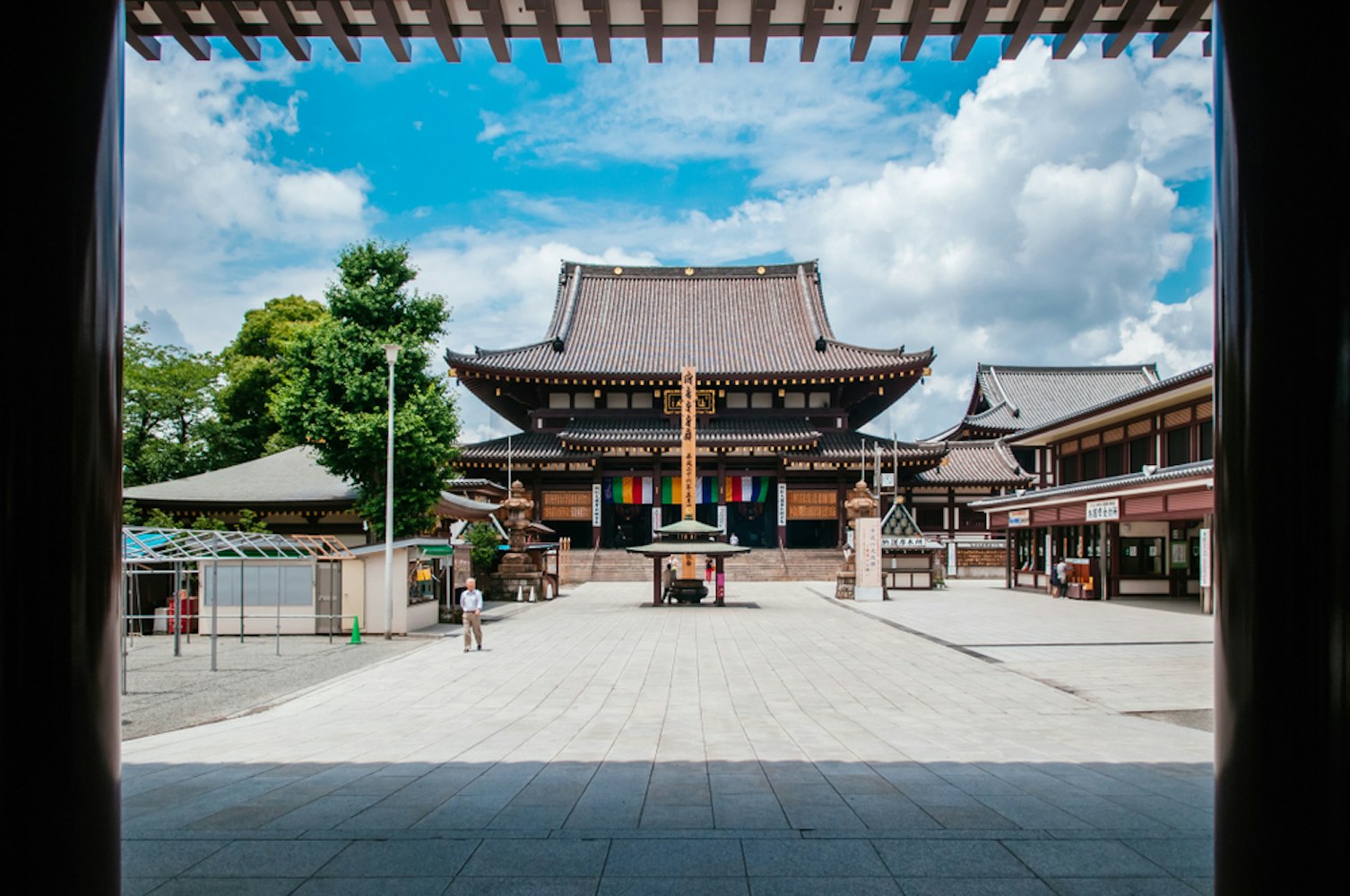
The Main Hall, also known as Daihondo, is the key part of Naritasan Shinshoji Temple. It's the temple's most important building. Inside, you'll see statues of Fudo Myo-o, an essential fire god in Shingon Buddhism.
The hall is not just for prayer; it's also a stunning piece of architecture. If you visit, take advantage of this spot. It hosts sacred events like the Goma Fire Ritual, making it the heart of the temple's spiritual and cultural activities.
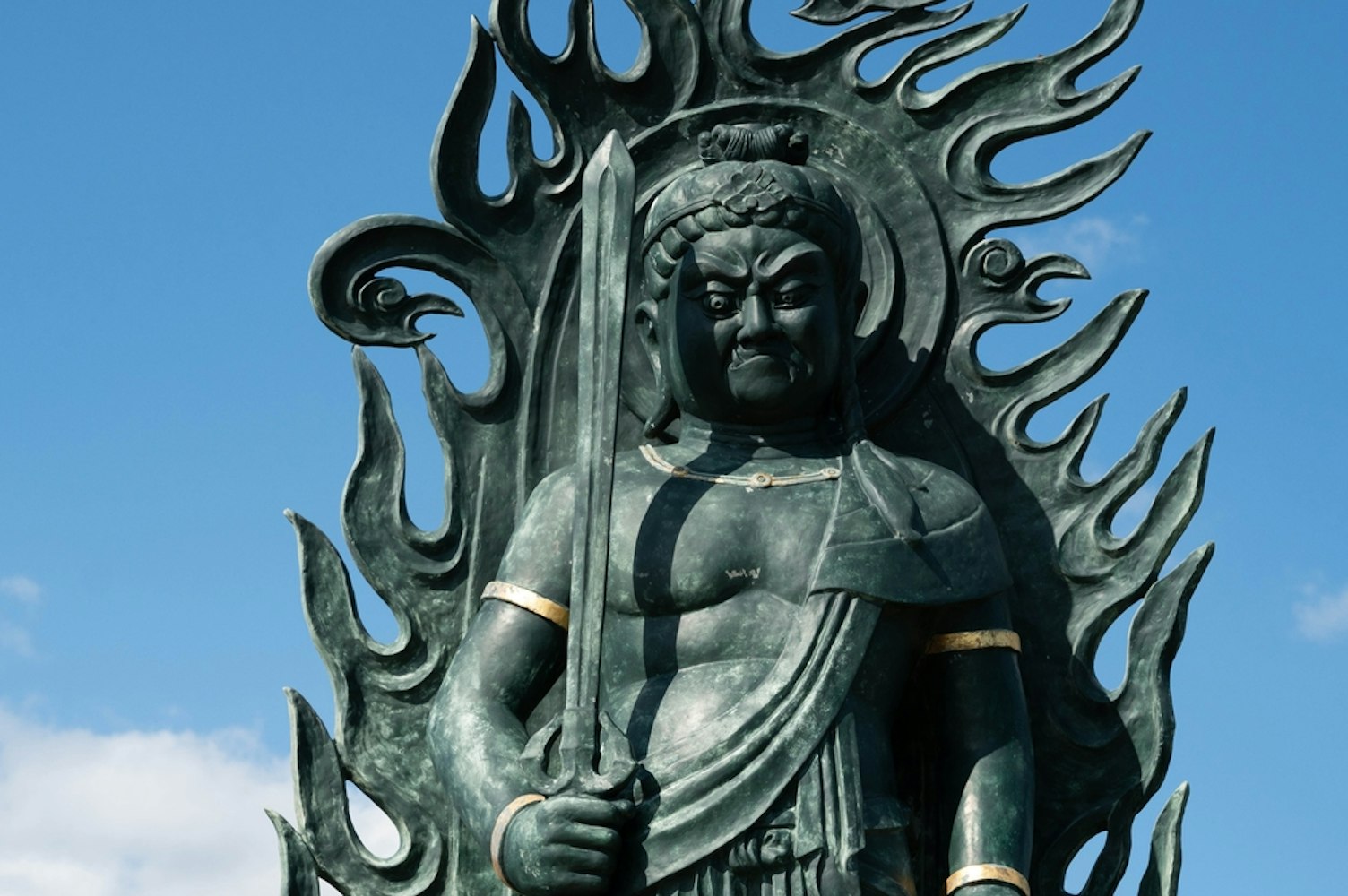
The Fudo Myo-o Statue is a big deal at Naritasan Shinshoji Temple. It shows a fire god from a type of Japanese Buddhism. This god helps remove problems in your life and your spirit.
The statue is a prominent part of a particular fire ceremony at the temple. In this ritual, prayers are burned to improve life and clean the soul.
Many people visit this statue for blessings and guidance. Whether you know about Buddhism or not, seeing this statue helps you understand the temple's importance better.
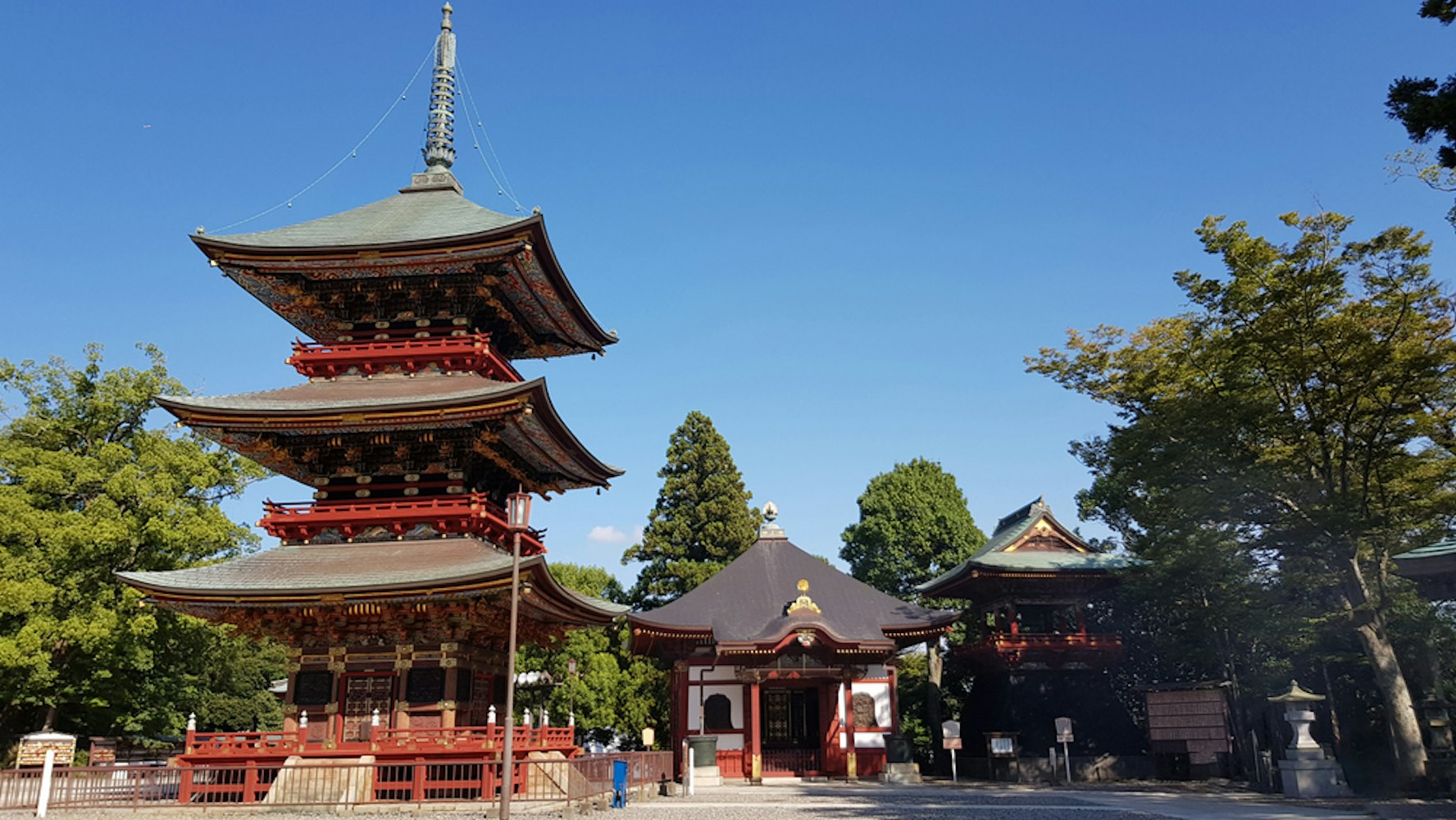
The Three-Story Pagoda is a key attraction at Naritasan Shinshoji Temple. It's built in a unique Japanese style called Tahoto. The pagoda is beautiful and gives excellent views of Naritasan Park. It's a top spot for photos and enjoying the temple's vibe. If you love taking pictures or want a good view, take advantage of this pagoda when you visit the temple.
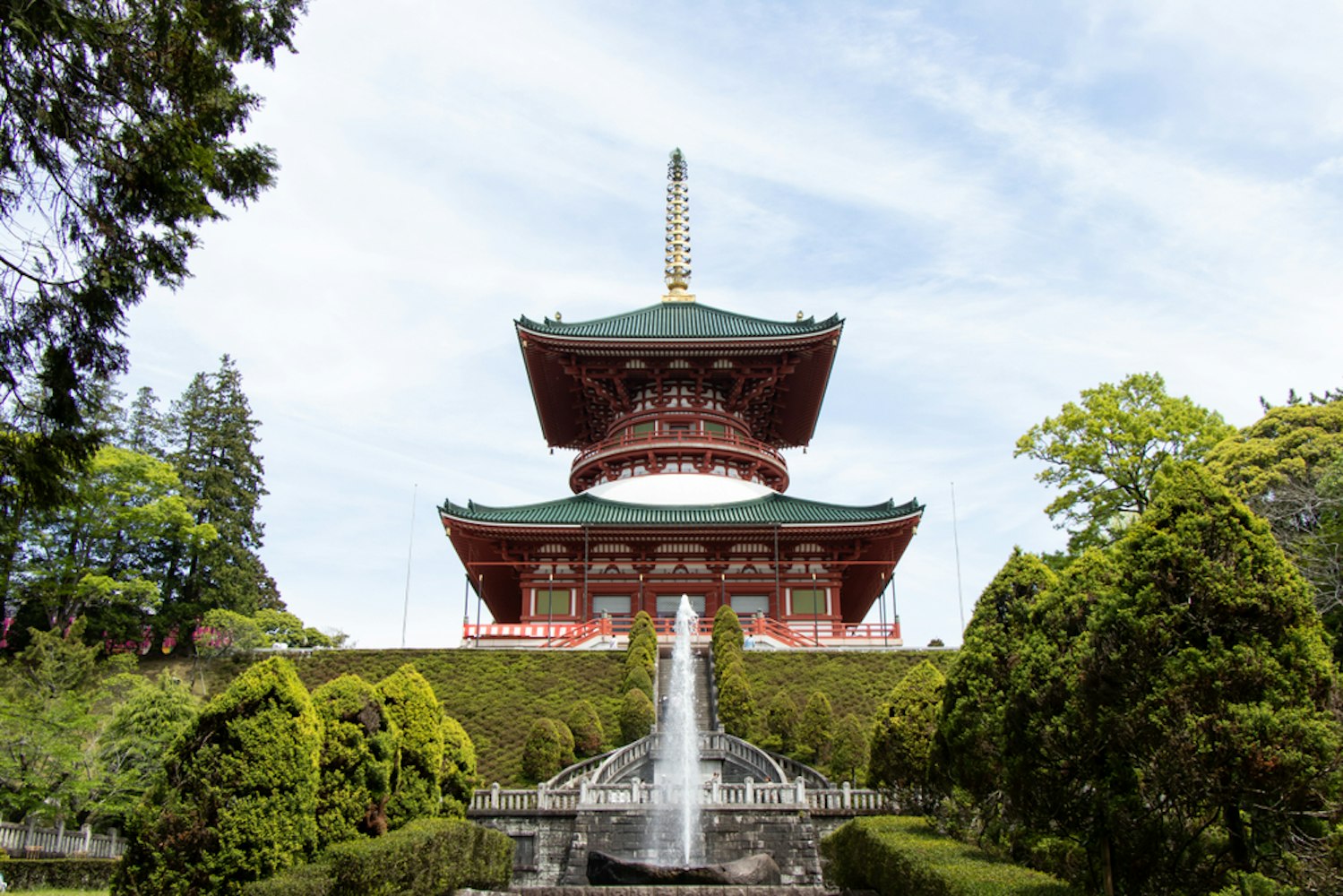
The Great Peace Pagoda, or Heiwadaito, is a big tower at Naritasan Shinshoji Temple. It's a symbol of peace and calm. The pagoda has traditional architecture and is a key highlight of the temple. People who visit feel peaceful and relaxed when they're near it. It's a top place to see for anyone visiting Naritasan Shinshoji. It offers a pretty view and a chance to think quietly.
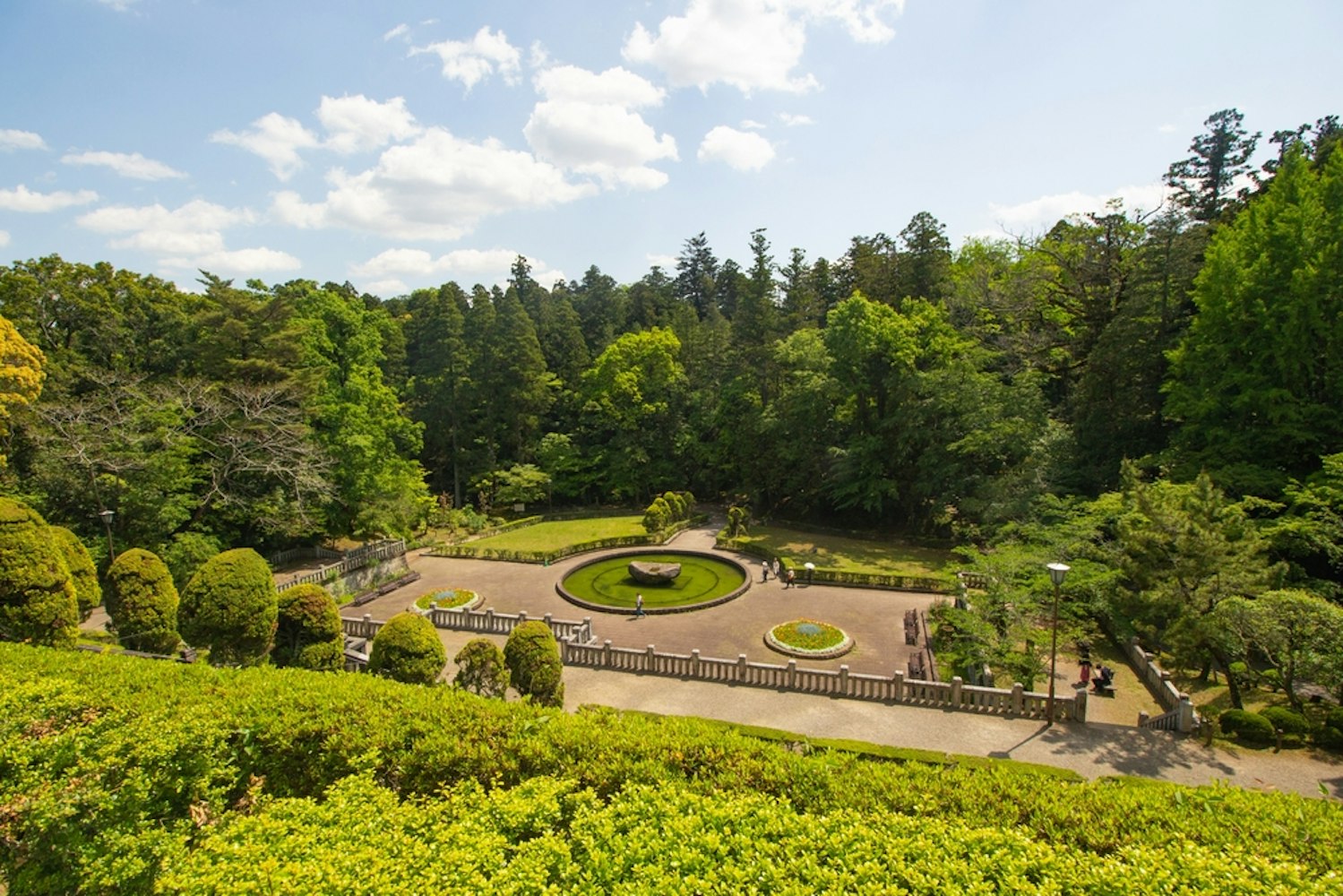
Naritasan Park is a beautiful green space next to the Naritasan Shinshoji Temple. This park is perfect for relaxing and meditating after exploring the temple complex.
Naritasan Park is a quiet spot away from daily stress. It has gardens, ponds, and places to walk. Visit during cherry blossom season for amazing views. The park isn't just for peace and quiet; it has cultural events too. Great for families and tourists. Make time for it if you're visiting Naritasan Shinshoji Temple.
Whether you're interested in the scenic beauty, cultural events, or simply a place to sit and reflect, this park has something for everyone.
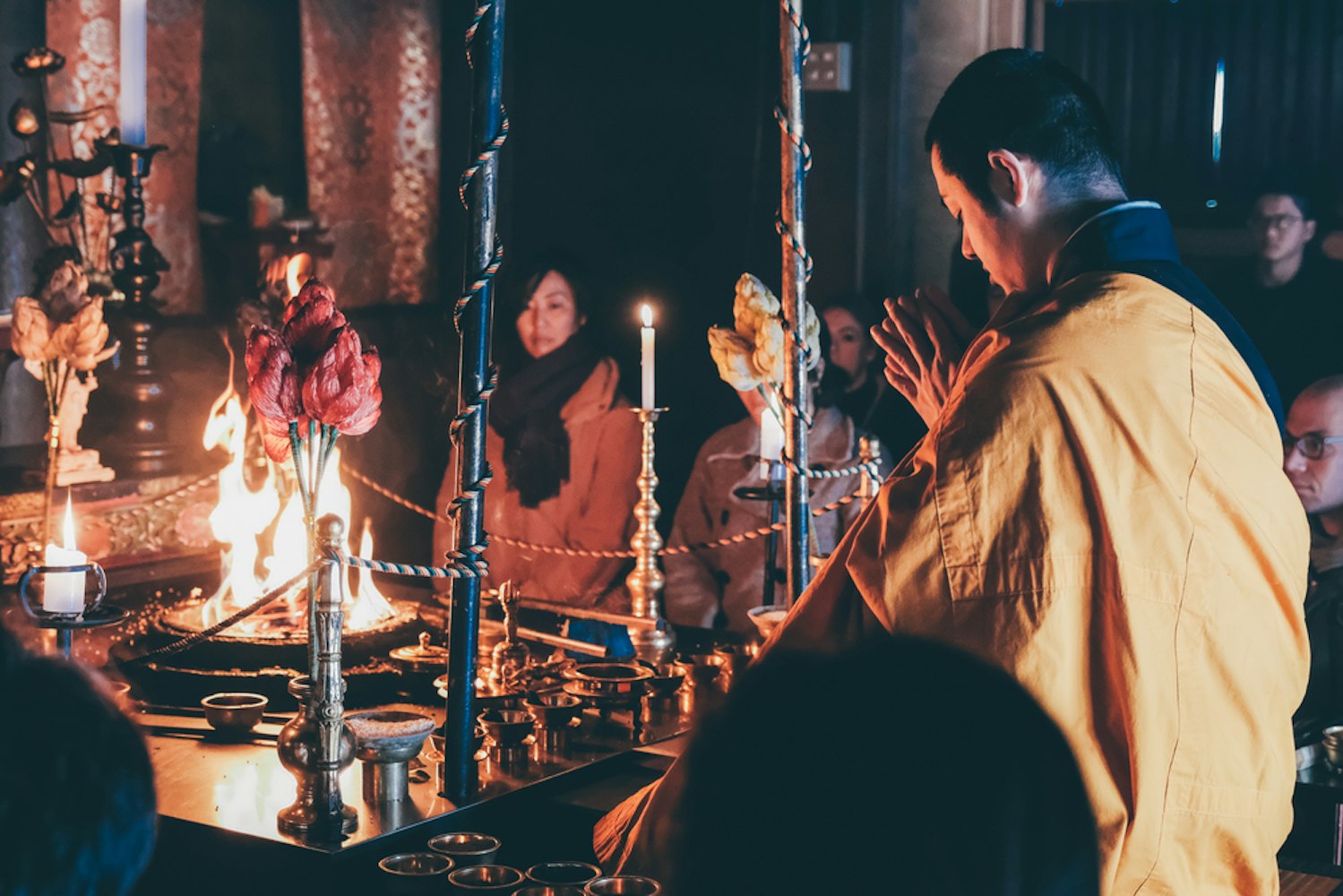
The Goma Fire Ritual is a special event at Naritasan Shinshoji Temple. It's been done daily for over 1,000 years and is essential in Shingon Buddhism.
In the ceremony, wooden sticks with prayers on them are burned. People believe the fire god, Fudo Myo-o, gets these prayers and helps remove life's hurdles.
Anyone can join in, no matter their background. Monks lead the event with chanting and drumming, making it engaging.
If you're at the temple, take advantage of this ritual. It's a chance for locals and visitors to experience something spiritual and culturally rich. It offers a peaceful moment for reflection.
The journey is relatively straightforward: make your way to Naritasan Shinshoji Temple. From Narita International Airport, you can hop on a convenient 15-minute train ride that will take you directly to Narita Station.
Upon arriving at Narita Station, you will find that the area boasts two main stations: JR Narita Station and Keisei Narita Station. Whichever station you choose, you'll only need to take a short and pleasant walk to reach the temple grounds.
You'll be delighted to know that some of them provide a complimentary shuttle service to the temple, making your visit even more convenient and hassle-free.
Naritasan Shinshoji Temple offers a spiritual respite that is easily accessible from Tokyo. Whether you're transiting through Narita International Airport or staying in Narita City, exploring this historic temple complex is well worth it.
From the stunning architecture of the Three-Story Pagoda and the Main Hall to the peaceful surroundings of Naritasan Park and the captivating Goma Fire Ritual, there's something for everyone to enjoy.
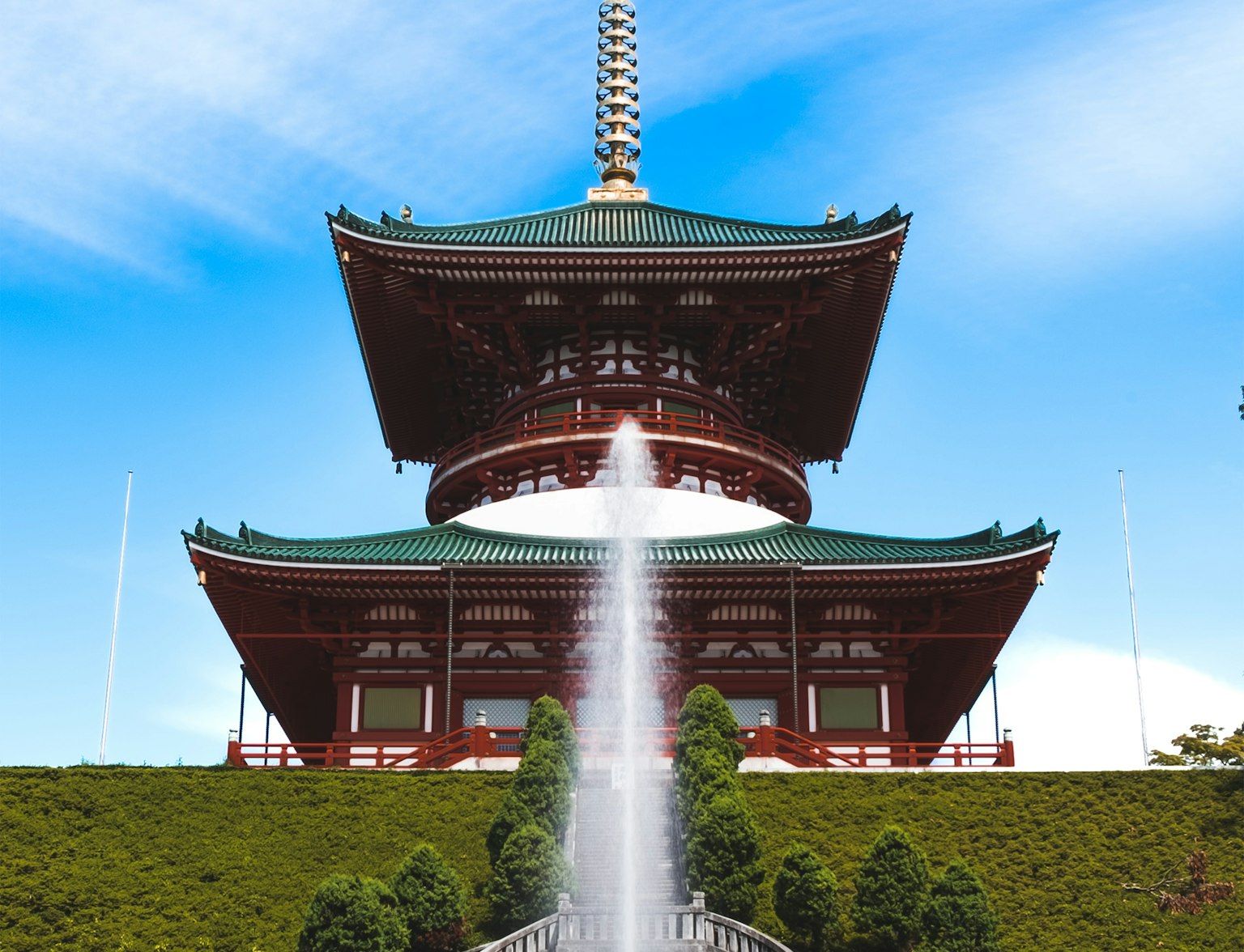
Experience the beauty and history of Narita with this exciting half-day layover tour!



